"How Accurate Is This Information?" ー How LINE Fact Checker Prevents the Spread of Fake News in Taiwan
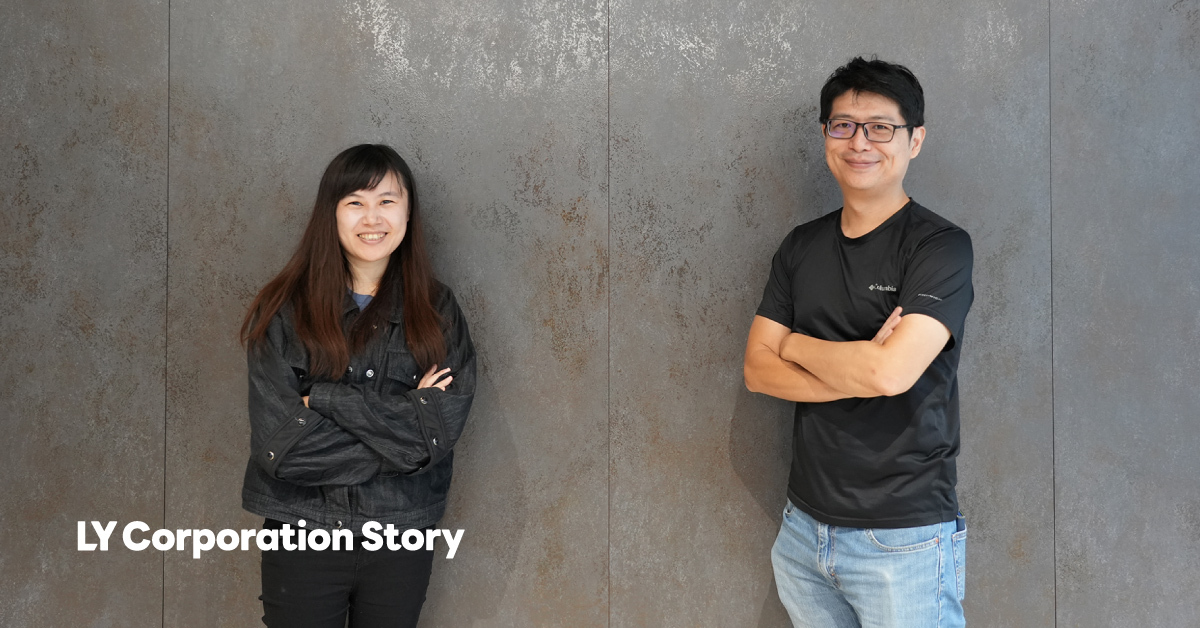
Every day, we are exposed to large volumes of information through television and the internet. However, have you ever wondered the accuracy of the information you consume?
In Taiwan, fake news is particularly rampant in areas such as politics, health, medicine, and disaster-related information, which is becoming a major societal problem.
To combat this issue, LINE Taiwan is offering a service called "LINE Fact Checker." This service helps prevent the spread of fake news by providing users with a tool for verifying questionable information.
We spoke with Kara and Ryan of LINE Taiwan, the leads of this service. We asked them about the background leading up to the service's release, their efforts to stop the spread of fake news, and the activities they are engaged in to improve the media literacy of the people of Taiwan.
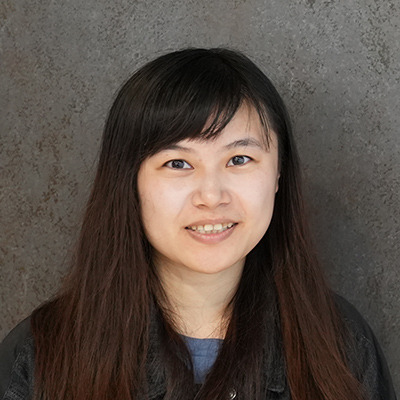
- Huang Jin-ya (Kara)
- LINE Taiwan Service Planning Team
After an internship at LINE Taiwan, Kara joined the company in 2018. Kara is currently in charge of Corporate Social Responsibility (CSR) initiatives and planning for the LINE STICKER service, in addition to LINE Fact Checker.

- Chang Yu-Jen (Ryan)
- LINE Taiwan Engineering Team
Ryan joined LINE Taiwan in 2020. He was involved with the development of the LINE Official Account for LINE Fact Checker, and is currently working as a developer on technical improvements to LINE Fact Checker.
About LINE Fact Checker ー Helping users verify the information they consume
―― To begin, could you please tell us what kind of service LINE Fact Checker is.
Kara:
LINE Fact Checker is a service that allows users to easily check the veracity of questionable information they come across through a LINE Official Account. When a user submits text or a link, partnered fact-checking organizations quickly provide three types of results: fake, true, or partially true. Information on a variety of topics, from politics to everyday life, is received through the LINE Official Account.
Currently, users can send text, website links, image texts, and audio data to the LINE Official Account to check its veracity. The LINE Fact Checker website (Traditional Chinese only) is also available. Even if users do not use the LINE app, they can check past verification results and fact-check details through the website.
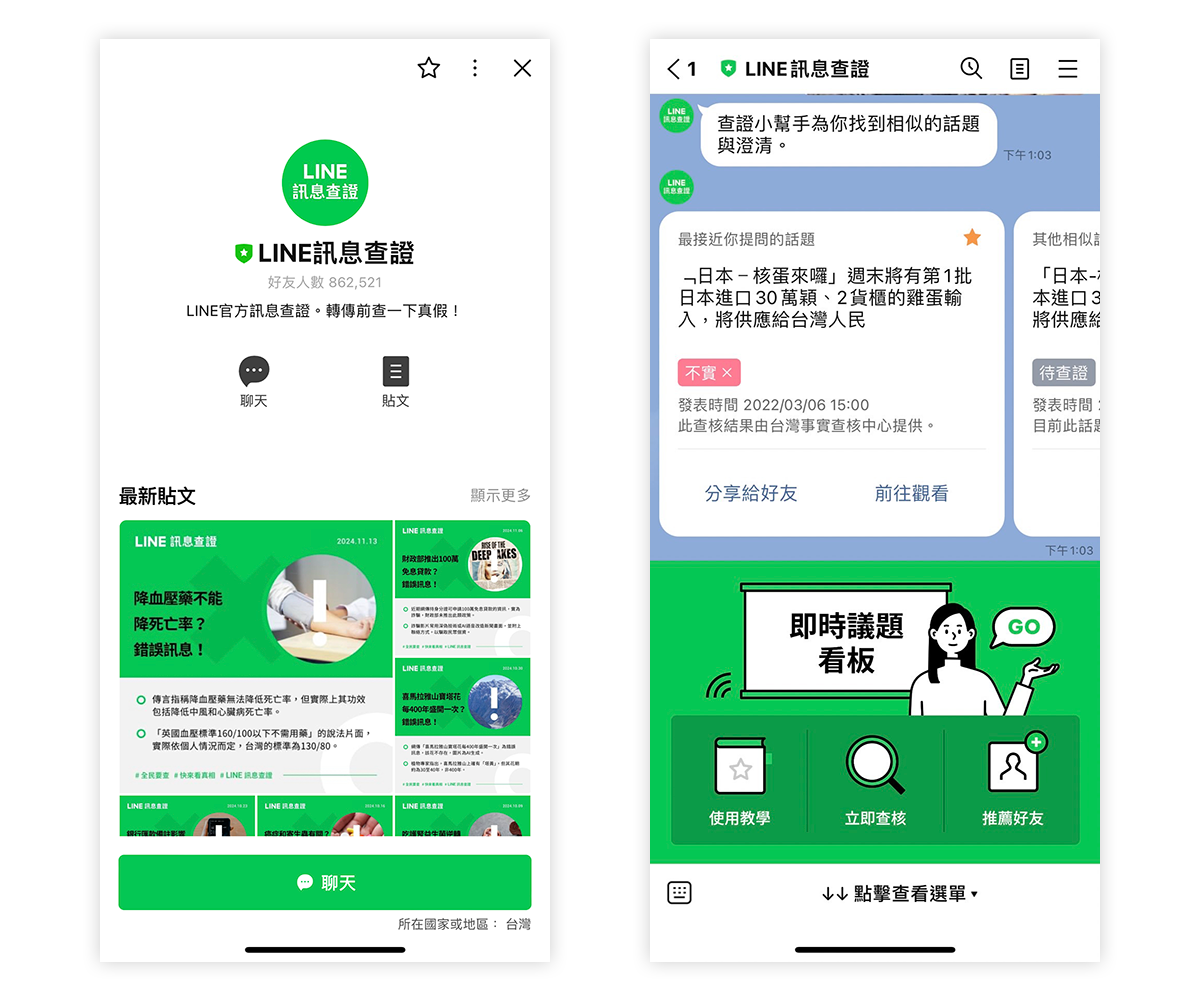
LINE Official Account for LINE Fact Checker
Users can submit questionable information or verify fact-checked information.
―― What led to the release of this service?
Kara:
Due to geopolitical issues, the prevalence of fake news in Taiwan has become a significant societal problem. According to a report by the V-Dem Institute(*1) at the University of Gothenburg in Sweden, Taiwan has been ranked as the country most severely affected by fake news from abroad for 11 consecutive years. Particularly during the local elections held in 2018, a large amount of fake news spread through social media and messaging apps, significantly impacting election campaigns.
Against this backdrop, LINE Taiwan launched the "LINE Digital Accountability Program" in March 2019, which aims to promote a healthier digital information environment in Taiwan and to fulfill our responsibility as an operator of a platform with 22 million users. As part of this initiative, we released LINE Fact Checker in July of the same year.
*1 Varieties of Democracy Institute is an international research institute that conducts detailed analyses of various aspects of democracy.
――How many people are currently using the service?
Ryan:
As of the end of October 2024, the LINE Official Account of LINE Fact Checker has garnered over 860,000 friends. More than 810,000 users have submitted questionable information, making it one of the most important fact-checking services in Taiwan.
In particular, the number of LINE Fact Checker users has increased significantly since the outbreak of COVID-19. During the spread of COVID-19, a lot of fake news emerged regarding treatments, medications, and statements from certain doctors.
As a result, the number of users accessing LINE Fact Checker exceeded 10,000 per day, setting a new record, as many people turned to it to obtain accurate information.
Many users wanted to quickly access accurate information because it concerned their lives and well-being. We were glad that in such a situation, LINE Fact Checker was trusted and utilized by so many people.
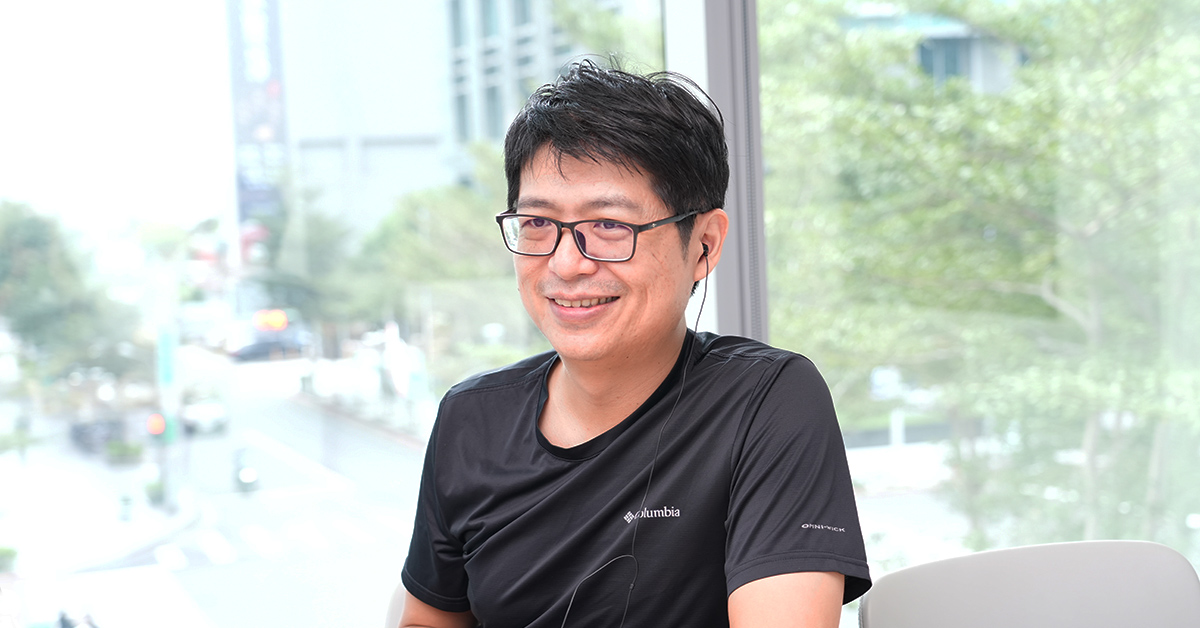
Collaboration between Taiwanese fact-checking organizations and LINE services
――Which organizations are you working with to judge the veracity of information?
Kara:
To provide users with reliable information, we collaborate with several fact-checking organizations. Specifically, we work with the Taiwan FactCheck Center(TFC), which is certified by the International Fact-Checking Network; MyGoPen(Traditional Chinese only); Cofacts, a volunteer-run organization; SMC, Science Media Center Taiwan (Traditional Chinese only) specializing in scientific information verification; and the Executive Yuan, a government agency in Taiwan. Through collaboration with these organizations, we strive to prevent the spread of fake news and provide accurate information.
With these partners, we not only provide a service for checking the veracity of information but also engage in initiatives and develop educational materials to raise awareness about fake news among the people of Taiwan. For instance, the "Youth Verification Challenge" conducted with TFC offered young people in Taiwan an opportunity to become aware of fake news and develop the skills to address it.
Aiming to enhance media literacy across Taiwan, we have also collaborated with an online education platform to offer an animated educational course called the "Science Media Literacy Course." These materials are used in elementary and middle schools in Taiwan, and we also conduct offline training sessions for teachers. Additionally, we engage in diverse educational activities, including developing children's digital thinking skills with educational materials that feature quizzes and gamified elements.
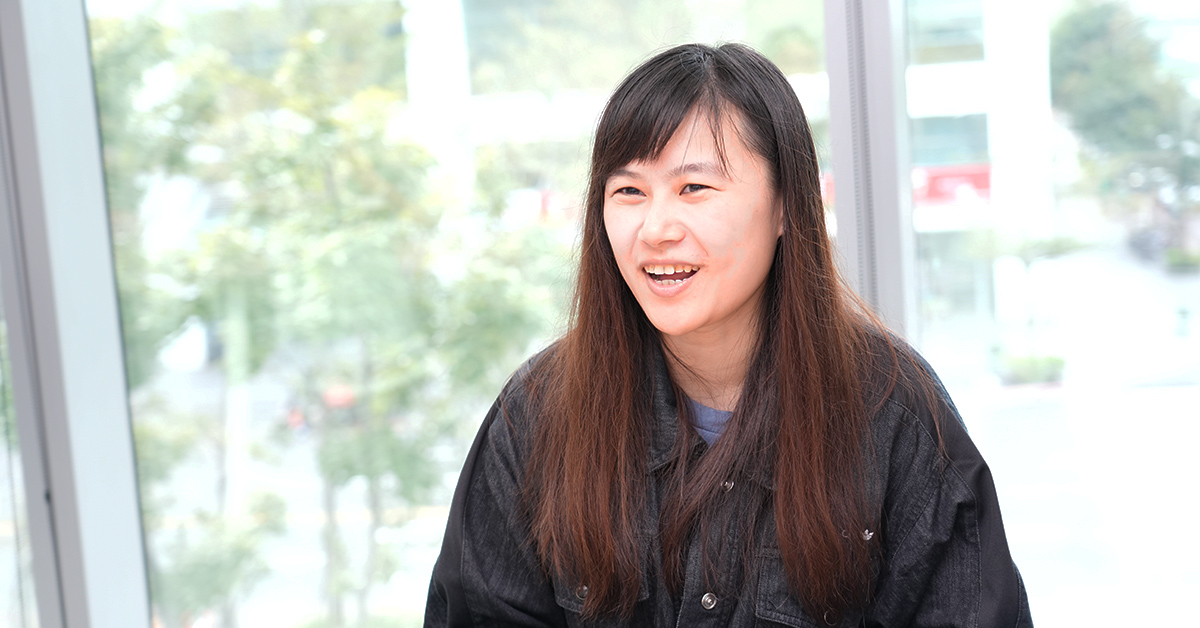
Ryan:
We also leverage other LINE services to combat the spread of fake news. In LINE TODAY, a news and content distribution service with 18 million users, a special section called "Rumor Debunking Section" is featured during events when fake news is rampant, such as presidential elections or pandemic outbreaks. This section provides users with access to fact-checked articles and collaborates with highly influential platforms to prevent the spread of misinformation.
Additionally, on LINE VOOM, verified news is posted weekly, providing users with important information and guidance on how to use LINE Fact Checker. Furthermore, there is an active movement among users to share information that they have fact-checked themselves, which contributes to the spread of accurate information.
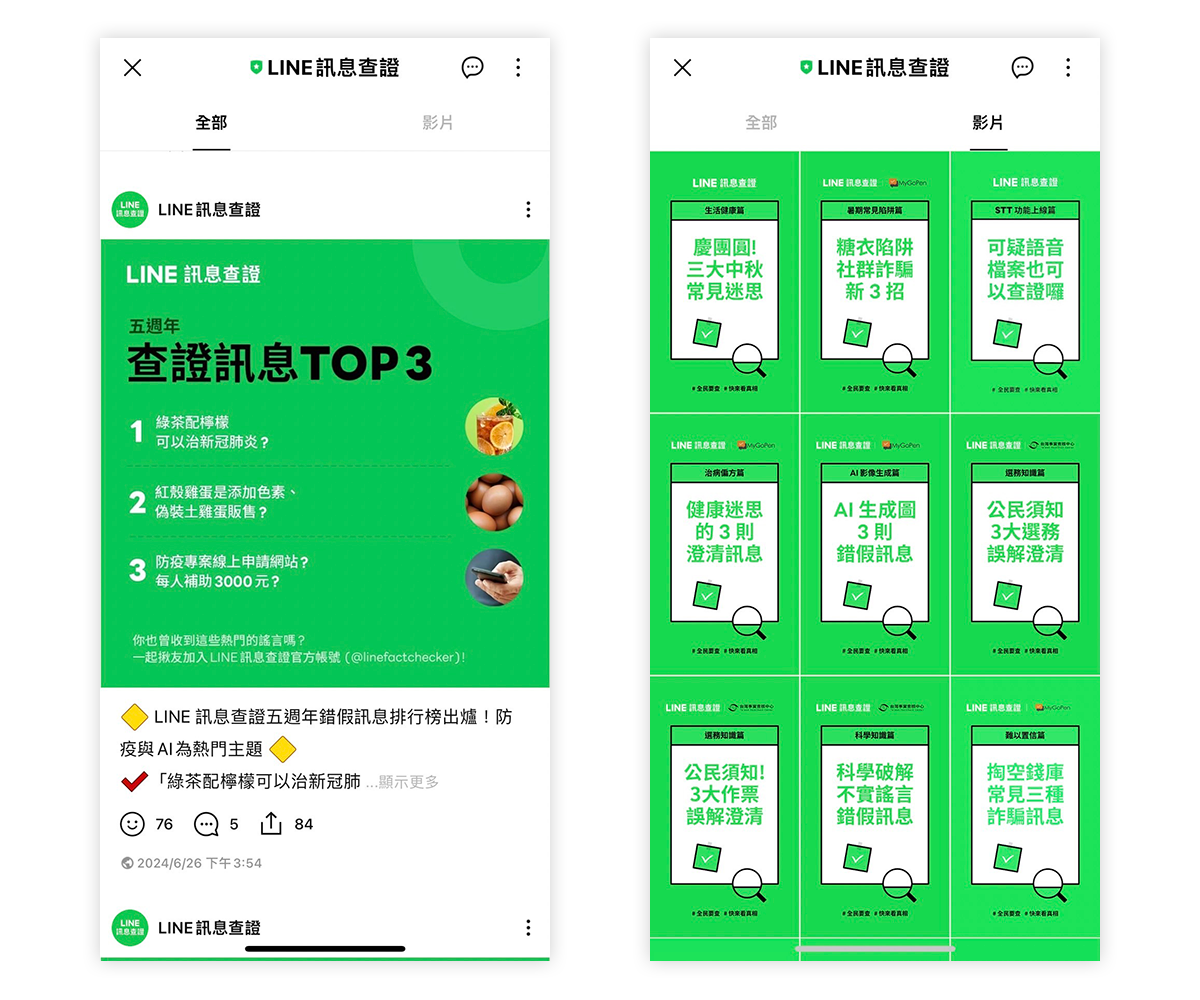
Posts from LINE Fact Checker on LINE VOOM
These posts cover a variety of topics, including health and AI.
Service operation that constantly incorporates user feedback
―― What kinds of things do you keep in mind when operating this service?
Kara:
We make sure to always have a clear understanding of our partners' needs and the usage patterns of our users. We regularly hold meetings to exchange opinions with our fact verifying organization partners, strengthening our cooperation. Through these interactions, we identified a challenge: the large number of fact-check requests from users require considerable resources and time to address.
In response, we implemented a system that filters out already-answered information and frequently recurring or seasonally repeated topics, such as disease treatments or summer electricity bills, so that only new information is sent to the verification organizations. This improvement has significantly increased response speeds and greatly contributes to preventing the spread of fake news.
Ryan:
Also, when the service first launched, users could only send text information to the LINE Official Account. However, we received feedback indicating that the same content existed not only in text form but also as text images and in audio format. To address this, we introduced optical character recognition (OCR) in April 2023, enabling us to handle text images. Furthermore, in June 2024, we implemented Speech-to-Text (STT) technology to cover audio files as well. As a result, we are now able to fact-check a wider variety of information formats.
In Taiwan, LINE Fact Checker is actually the first service that allows users to experience both OCR and STT. Moving forward, we aim to continue valuing feedback from our partners and users, striving to create a service that delivers accurate information more quickly.
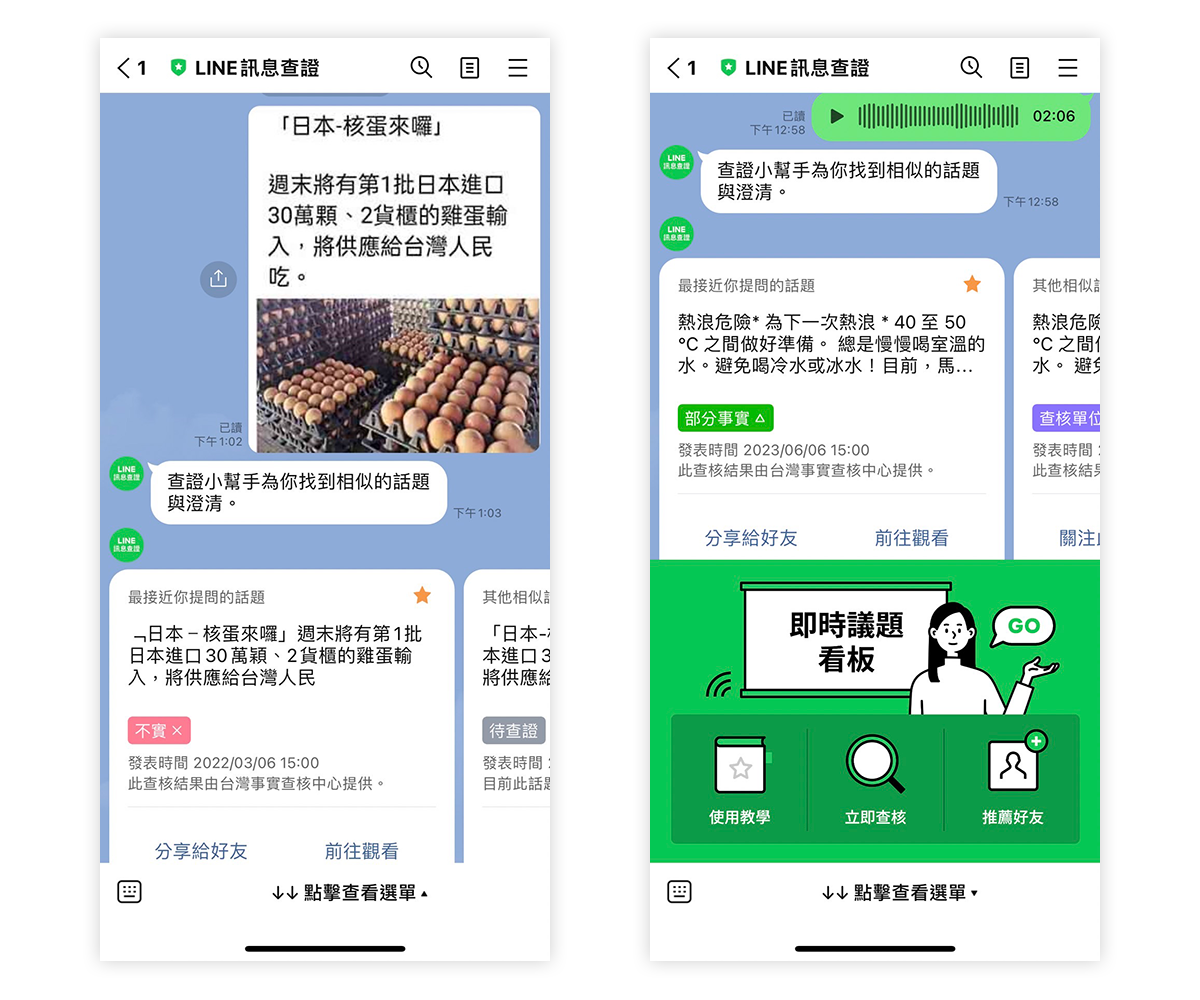
Fact-checking using OCR and STT
Users can also send text images and audio data.
Contributing to Taiwanese society as Taiwan's largest fact-checking service
――How is the LINE Fact Checker initiative impacting the people of Taiwan?
Kara:
According to a survey conducted by Ipsos in 2021, the awareness of fake news among users improved from 37% in 2019, to 41%. This indicates that users have developed a more critical mindset towards questionable information on the internet.
A survey by LINE Taiwan in the same year revealed that 60% of people in Taiwan primarily use internet searches to check the veracity of information. Compared to 2019, the proportion of people using fact-checking organizations to verify information has nearly doubled.
These survey results suggest that the efforts of LINE Fact Checker are significantly raising awareness of fake news and improving media literacy among the people of Taiwan.
The LINE Digital Accountability Program was also honored with the Corporate Social Responsibility (CSR) Award in the 16th edition of "Global Views Monthly"(*2) in 2020. We are very proud that our responsibilities and contributions to Taiwanese society are being highly recognized.
*2 Global Views Monthly is a well-known Taiwanese magazine that provides analysis and insights on topics such as business, economics, and societal issues.
Helping more people improve their media literacy
――What are your future prospects?
Ryan:
We want to provide an easier to use service for both our users and partners. As a developer, I want to actively utilize AI and other technologies to expand the types of data that can be fact-checked and the languages we support. To contribute to improving media literacy among more users, we are also researching user interfaces that are easy to use for a wide range of age groups, from young children to the elderly.
Another challenge is that it still takes a significant amount of time for our partners to perform a single fact-check. We are focused on reducing their workload and shortening the response time.
Kara:
As a service provider, I am delighted to see the number of friends on the LINE Official Account of LINE Fact Checker and the number of visitors to our site increasing daily. However, I strongly hope that users will not only rely on these tools but also develop the ability to judge information independently. It is important to question the information we come across daily and use fact-checking tools correctly to cultivate the ability to make informed judgments. To this end, we want to strengthen our collaboration with partners to further enhance media literacy education.
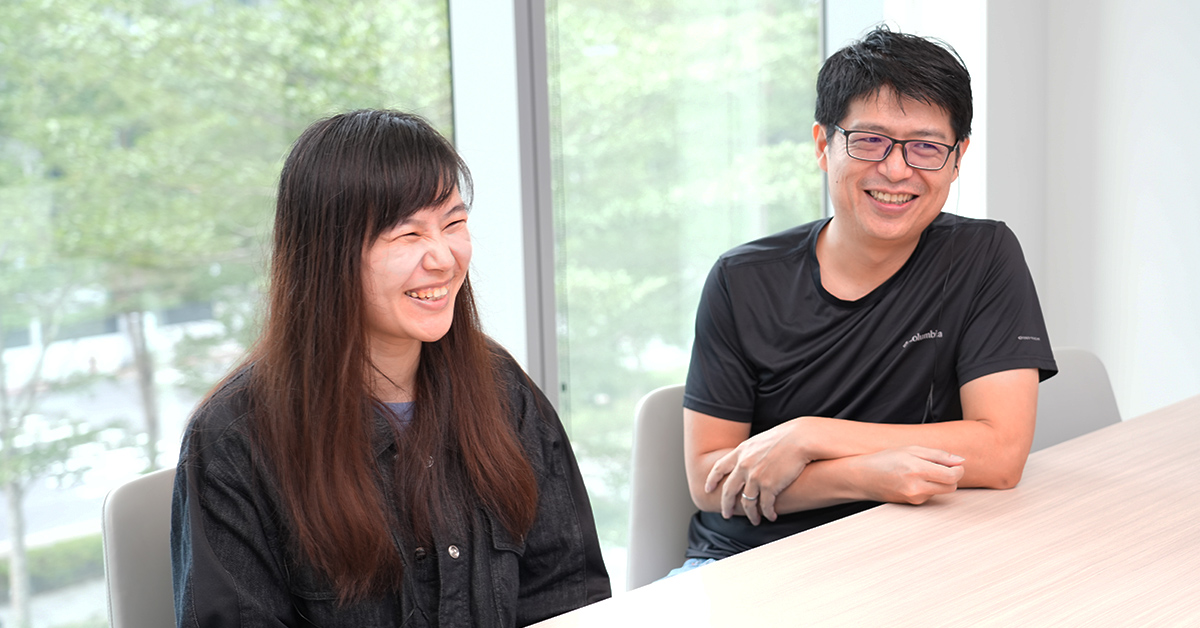
Related Links
Interview Date:November 14, 2024
*The affiliations and titles in the article are as of the time of the interview.

- About The LY Corporation Story
- Making daily life more convenient and exciting for everyone.
As our corporate blog, The LY Corporation Story will share the inside story behind the challenges that we take on to create WOW! as well as the thoughts and feelings behind them.


